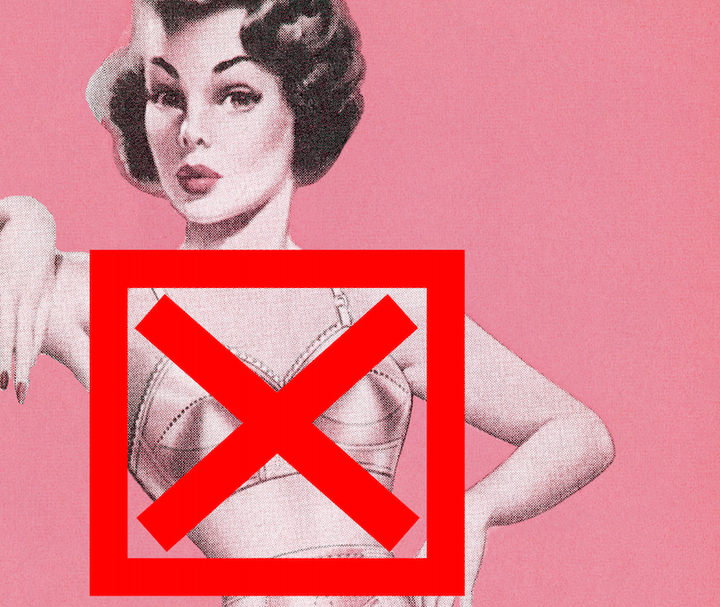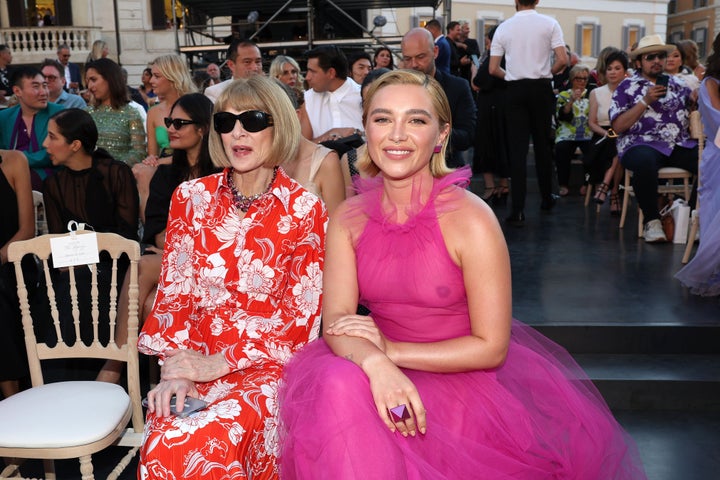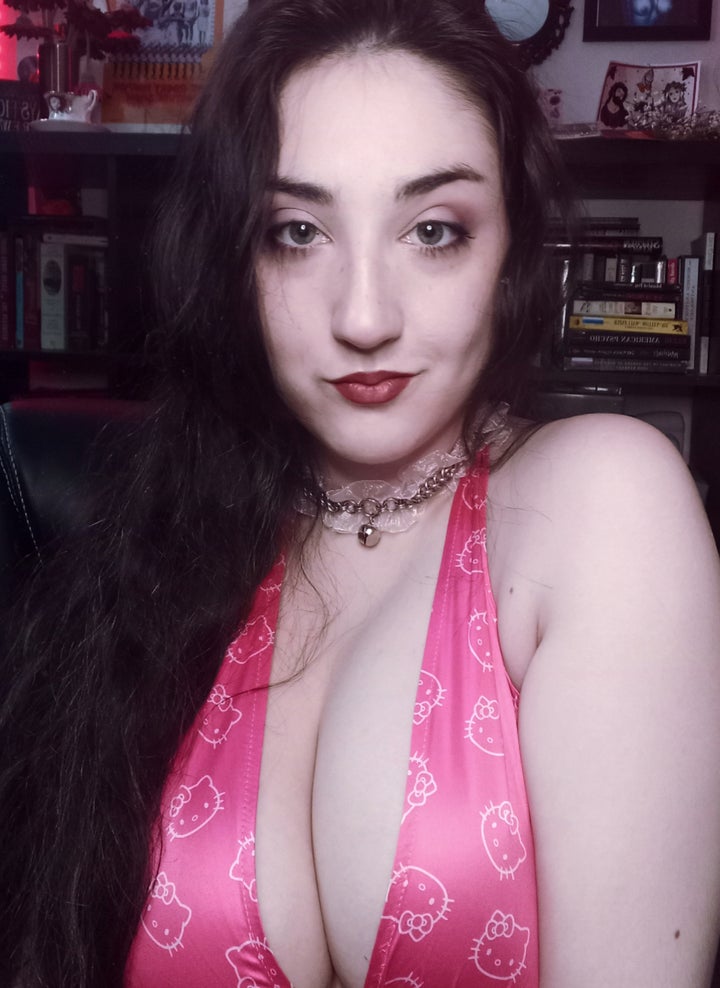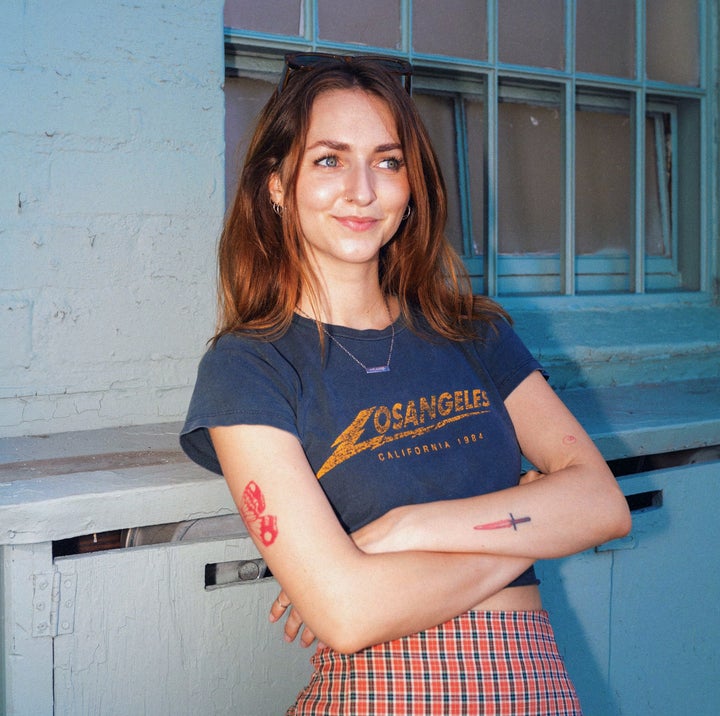
For many bra-wearers, the pandemic offered the ultimate excuse to forgo wearing one: Why put on a bulky, prodding, underwired thing when you’re just going to stay home, anyway?
Colleen Davies, a 25-year-old artist from Ontario, Canada, was among those who opted to go bra-less. When she had to leave her home to ship orders or run to the store, she simply slipped on a big hoodie or a T-shirt and called it a day. If someone stared at her chest long enough to get a read on her bra status, she figured it was “their issue,” not hers.
“I’m also a pretty large cup size and figured out I’m autistic, so going back to that sensory hell just didn’t feel necessary after I started going out more regularly,” said Davies, who noted that a lot of friends have ditched their bras, too.
“I have lot of friends with nipple piercings, so going braless is part of the style,” she told HuffPost. “It’s fun, it’s less layers to worry about, whereas older women in my family, even if they hate wearing them or are in the house, will still put one on.” (Of course, generationally, it’s also a case by case thing; as CR Fashion Book notes, the anti-bra movement began as a retaliation against feminine norms and was a product of the second wave of feminism during the 1960s.)
Going braless is once again having another moment. Celebrities like Dua Lipa and Florence Pugh have made sheer, bra-less looks a part of their regular style repertoire.
Last month, The New York Times even had an advice column exploring the cultural mores and legalities of going bra-less (“Is it OK to show my nips, or is it rude?” the reader asked. Legally, that person may want to stay clear of Indiana; the state defines public indecency partly as “the showing of the female breast with less than a fully opaque covering of any part of the nipple.”)

Indeed, even in 2023, when comfort is still king post-pandemic, there are still plenty of people who find the sight of a bare nipple off-putting. Last month, Pugh spoke to Elle magazine about the backlash she endured when she wore a sheer Valentino dress at an Italian fashion show last year.
“When everything went down with the Valentino pink dress a year ago, my nipples were on display through a piece of fabric, and it really wound people up,” Pugh explained. “It’s the freedom that people are scared of; the fact I’m comfortable and happy.”
“Keeping women down by commenting on their bodies has worked for a very long time,” the “Oppenheimer” actress added. “I think we’re in this swing now where lots of people are saying, ‘I don’t give a shit.’ Unfortunately, we’ve become so terrified of the human body that we can’t even look at my two little cute nipples behind fabric in a way that isn’t sexual.”
Davies said she feels the same way. For her, the most annoying preconceived notion about women who don’t wear bras is that they’re attention-seeking.
“As if my breasts sitting low and unencumbered is more intimate than being pushed up [with an] underwire,” she said. “I think the nipple is a sticking point for most people, where any indication that you have them is inherently raunchy. It’s odd.”

It’s the “you’re only doing it for attention” perception that bothers author (and bra-less fan) Tia Love-DeBenedetto the most, too. But as a boob-haver, she’s also come to expect that kind of judgment.
“I’ve had sizable breasts since I was 13, and at every stage of their growth, I’ve witnessed other people responding to them like I poked them out with the intent to be provocative,” she told HuffPost.
After moving to Charlotte, North Carolina, from Milwaukee, Wisconsin, last year, Love-DeBenedetto decided it was just too hot to wear a bra. (“Titty sweat and bras is a lethal combo no one should subject themselves to if they don’t have to,” she joked.)
“At 34, after two kids, and going bra-less most of the time since the pandemic, I view my breasts as a part of my anatomy. I will cover them so as not to be nude, but I’m not wearing a bra unless I want to,” she said.
“I’m a stay-at-home-mom and a freelancer, so I’m not often in spaces where I need my tits to look the way they did when I was 19,” she added.
!["I will cover [my breasts] so as not to be nude, but I’m not wearing a bra unless I want to," said author Tia Love-DeBenedetto.](https://img.huffingtonpost.com/asset/650102042400006300bee37a.png?ops=scalefit_720_noupscale)
Of course, sometimes the preconceived notions about going bra-less are ideas we’ve internalized.
“I’m a millennial who got the zap on my head very young that if you don’t wear a bra ― even at night! ― your boobs will sag like Salvador Dalí clocks,” said Molly Sanchez, a 32-year-old comedian from Los Angeles, California.
Now, Sanchez only wears the undergarment to work or in front of family: “I want to keep my nipples a secret from those folks, but everyone else can know,” she said.
“I resent that men can be out here nippin’ 24/7 but women have to pretend like they have Barbie doll breasts,” she said.
Growing up, Sanchez felt that much of the messaging she received about being a woman primarily communicated one thing: “It’s your job to protect yourself by not tempting the world.” Bras were part of that agreement.
“Women have been taught in some form or another, ‘Your comfort is not as important as the comfort of people around you,’” she said. “Part of me personally not wearing a bra is saying, ‘Actually, I’m comfortable this way, and if seeing a body part that we all have bothers you, that’s a “you” issue, not a “me” issue.’”
Lizzie Bromley, a 25-year-old writer and yoga instructor in Los Angeles, California, prefers going braless, too, though she realizes it’s a privilege that some bigger-chested people who need the extra support of a bra don’t have. Because heavy breasts tend to move more, they can put a strain on parts of the body that support them, including the chest, back, neck and shoulders. (The movement factor is why, for most women, it’s essential to wear a bra during exercise.) The strain could lead to hunching over more and poor posture, which could lead to some back pain.
Funny enough, as a little kid, Bromley remembers being something of a bra enforcer.
“I remember when I was around 9, one of my friends was wearing a swim shirt, and I could see her nipples underneath her shirt, so I I told her that it made me uncomfortable to see her nipples,” she told HuffPost.
When the kids’ babysitter told Bromley it wasn’t a big deal, and that no one should be ashamed of their body, “I distinctly remember being in that environment, hearing those words and just disagreeing,” she said. “And, of course, now I completely agree with what that babysitter was saying.”

Now that she’s working as a yoga teacher, poky nipples are very much normalized for Bromley.
“Obviously, you see people’s nipples through their sports bras, and I don’t even think twice about it,” she said. “Whereas, in the past, I’d be like, ’Oh my gosh, maybe that’s so embarrassing for them. This makes me uncomfortable.’”
“I think that the people who judge other people’s bodies in general are probably feeling some sort of insecurity and I personally just don’t have that insecurity anymore,” she said.
For Bromley, the biggest misconception about ditching the bra is that doing so is always some outsized political statement.
“There’s this idea that you’re trying to take a stand for something and you want to dismantle the patriarchy. And while I, of course, want to dismantle the patriarchy, I ultimately think that it’s just a really good idea,” she said.
If the so-called “braless movement” is about anything, Bromley thinks it’s just about body empowerment and body neutrality: “It feels good to be comfortable in your own skin.”